Halloween is a big deal in the United States, but we aren’t the first or only country to have a day celebrating all things spooky. Most cultures have an event where they pay tribute to the dead by performing traditional rituals, dressing up in costumes or throwing a huge celebration. Other festivals are more of a cleansing event – ridding their town of anything evil in preparation for a new year. Many countries, such as Ireland or Romania, have a history that provides the basis for what we think of Halloween today. Images of skeletons, ghosts, devils, and even jack-o-lanterns appear worldwide. We’ve listed some prominent Halloween customs from around the world featuring scary stories, unique celebrations and rich traditions.
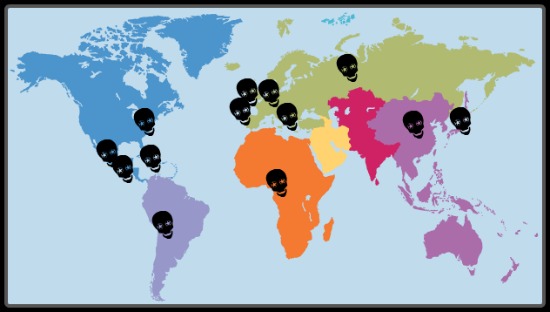
1. Bolivia
Name of Event: Carnaval de Oruro
Date: During the 10 days before Lent
History: The Oruro Carnival has been celebrated in South America since pre-Columbian times. This festival is observed by the Uru people in Bolivia; the Uru are a pre-Incan tribe. During the festival, there is a parade that features Tio Supay, the god of the mountains, who is portrayed as the devil, and Pachamama, Mother Earth, who is portrayed as the Virgin Mary. There is a legend that a mural of the Virgin Mary appeared in a mineshaft in the city of Oruro and the festival is in honor of this miracle.
Tricks and Treats: A main part of the Carnaval de Oruro is the dance of the devils, also known as La Diablada. There are more than ten other types of indigenous dances that are performed during the parade, which lasts over 20 hours. The parade travels through the city and features more than 28,000 dancers. At the end of the parade, the Uru people put on two plays – one about the Spanish conquest and the other reenacts the Archangel Michael defeating the devil and destroying the seven deadly sins.
Costumes: People who dress as the devil during this event go all out. The masks that they wear are often incredibly ornate and frightening; they feature horns, wide grins with pointed teeth, and deep, scarlet skin. They also wear red and pink tights to simulate red skin. Many of the costumes worn by dancers have bright colors, feathers and fringe as decoration.
Find Out More:
https://en.wikipedia.org/wiki/Carnaval_de_Oruro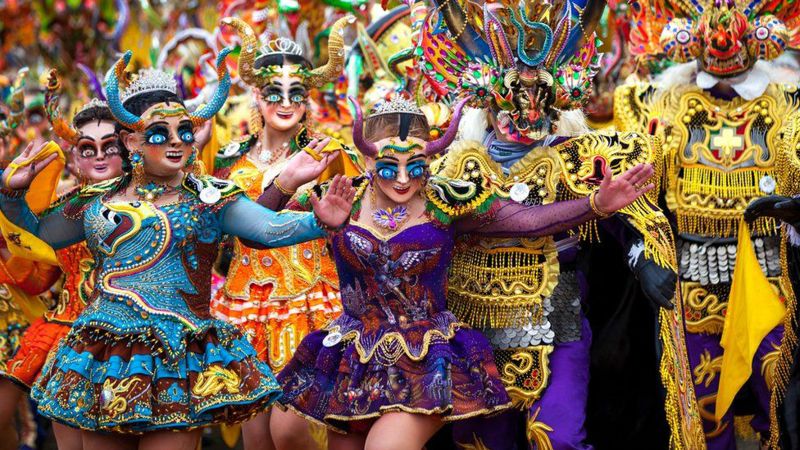
A troop of dancers at the Carnaval de Oruro.
(via BBC.com)
2. China
Name of Event: Hungry Ghost Festival
Date: August 14th
History: In Buddhist Chinese belief, the dead are said to return to earth during the 7th month of the lunar calendar. These ghosts, who are believed to have never had a proper funeral tribute, are said to be very hungry from their journey back to earth, so it is a ritual for family members to prepare a giant feast on the night of their return. The table is often set with empty chairs in place for the deceased, as if they were still alive for the night. If the ghosts are happy, good fortune and luck is said to come to the living. This legend is celebrated through most parts of Eastern Asia, such as China, Taiwan, Singapore and Malaysia.
Tricks and Treats: There are many superstitions and rituals related to the Hungry Ghost Festival, many of which are in place to please the spirits. It is common for people who celebrate this festival to give many offerings to the dead. “Hell money,” which is a fake bank note made out of paper, is burned, as well as other papier-mâché creations of modern objects, such as cars, houses, clothes, and TVs, in hopes that the deceased can use them and be comfortable in the afterlife. Two weeks after the night of the festival, lanterns are set up at homes and are floated on rivers to help guide the dead back to their afterlife. When the lanterns blow out, it means the deceased have found their way home. The dead are also said to dwell in water during this time, so many people avoid swimming, so that they won’t be kidnapped and taken to the underworld.
Costumes: Traditional Chinese costumes are worn during parades and opera performances. Ornate headgear and military armor are used to distinguish character’s personality, ranking and status. Detailed and elaborate puppets and masks are also used during different events, depicting demons and hungry ghosts from folklore.
Find Out More:
https://en.wikipedia.org/wiki/Ghost_Festival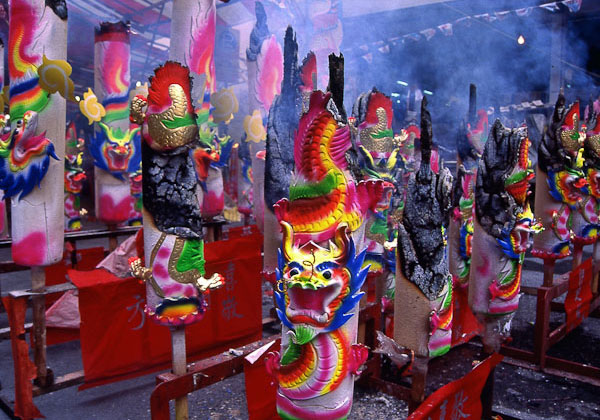
Lighting Joss Sticks at a Hungry Ghost Festival in Singapore.
(via PBS.org)
3. Germany
Name of Event: Walpurgisnacht
Date: April 30th
History: In German folklore, the eve of May Day is said to be when witches meet on the Brocken mountaintop and celebrate the coming of spring. The day is named for Saint Walburga, an English missionary in the 700s, who was canonized on May 1st. Walpurgisnacht is also known as “the witches’ sabbath." Bonfires are often lit at celebrations, and singing and dancing is a common activity at the events. Today, many people in Germany and other parts of Europe still observe Walpurgisnacht, although in a less serious, religious way. Current celebrations are more like Halloween and children dress up and trick-or-treat in their town.
Tricks and Treats: The Brocken mountain, which is the highest point in its range, is known for the atmospheric phenomenon called the Brocken spectre. The spectre appears when sun shines from behind a person onto fog in front of them. Although it is only an optical illusion, the shadow appears to magnify to enormous sizes. The illusion also creates a halo on the shadow, which is often glowing and filled with colored light. This phenomenon is a reason why it is said that the witches gathered on the mountain. During Walpurgisnacht, children often create mischief, such as hiding other people’s items, spray-painting graffiti and tampering in gardens.
Costumes: Many witches are portrayed in German woodcuttings and paintings. They are shown wearing long skirts and capes, holding broomsticks and wearing pointy hats. Today, children who participate in Walpurgisnacht often wear classic Halloween costumes, like witches, ghosts and ghouls.
Find Out More:
https://en.wikipedia.org/wiki/Walpurgis_Night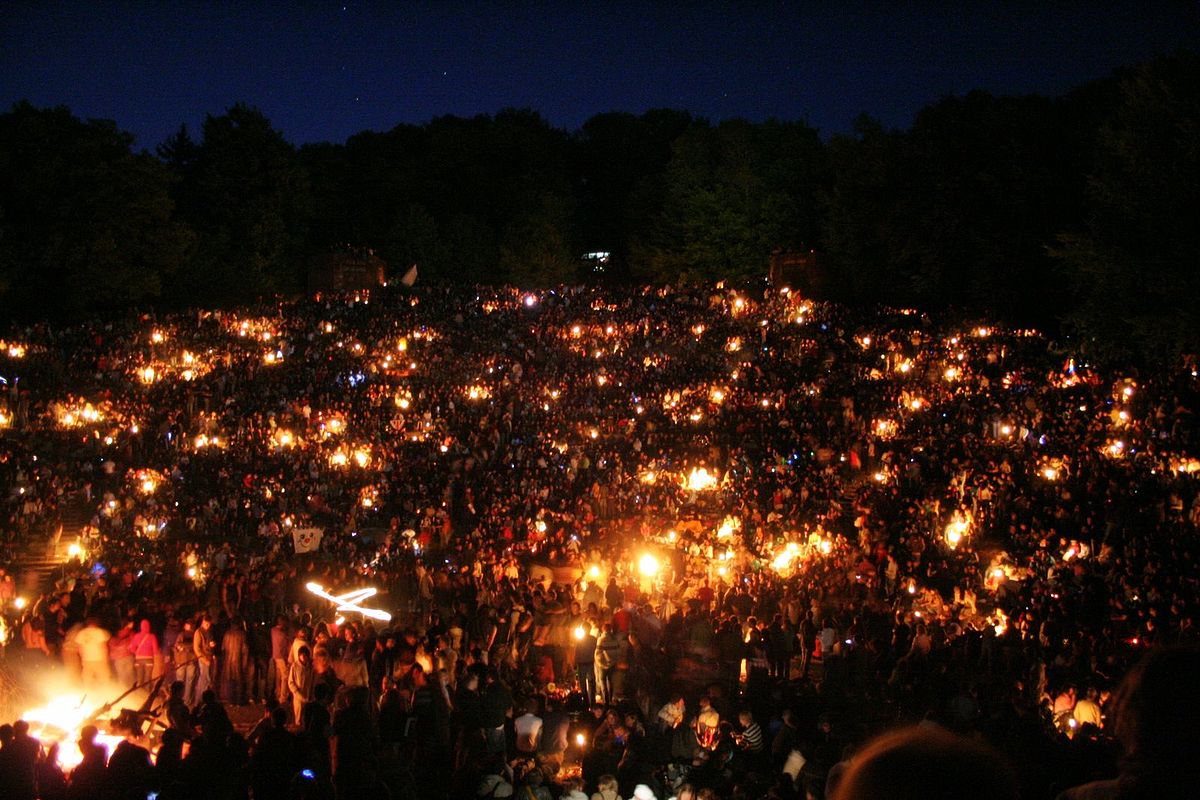
Walpurgisnacht at Heidelberg open-air theater.
(via Wikipedia.org)4. Guatemala
Name of Event: La Quema del Diablo
Date: December 7th
History: La Quema del Diablo, also known as The Burning of the Devil, started in Guatemala during colonial times. To prepare for the feast of the Immaculate Conception, residents lit lanterns outside of their house. Those who couldn’t afford to buy lanterns lit piles of garbage that they gathered from a massive house cleaning. This house cleaning and trash burning began to symbolize a fresh start into the new year. Eventually, tradition evolved and soon it became a yearly event to burn an effigy of the devil at 6 p.m. in Antigua and other cities. It is believed that the devil lives in unnecessary possessions and represents misfortune and a presence of evil. After all the bad things are burnt away, the country is ready for the feast for the Virgin Mary, who is the patron saint of Antigua, Guatemala.
Tricks and Treats: During La Quema del Diablo, there are often parades, fireworks, feasts, and bonfires through the country. Traditional celebration food is eaten, such as donuts and cotton candy, and many of the events have the feel of a street fair. Young children light off firecrackers throughout the night and marimba bands play at city parties.
Costumes: The effigy of the devil is usually decorated in the most traditional sense of the demonic image. A red man, with horns, a long and pointy tail, and pitchfork, is portrayed. Often, the devil is stuffed with firecrackers for a more dramatic effect when it’s lit on fire. Other times, the figure of the devil is decorated to look more like a human, sometimes with wings, fangs and even a cigar.
Find Out More:
https://www.nationalgeographic.com/travel/article/burning-the-devil-in-guatemala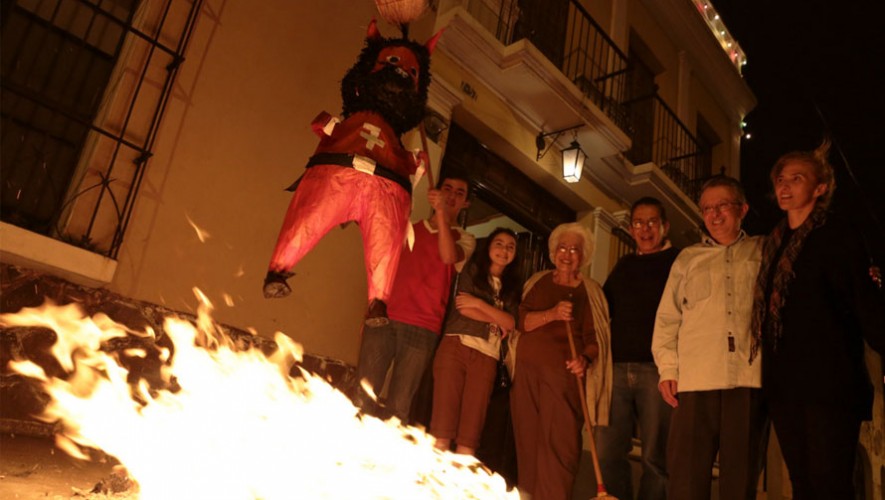
An effigy of the devil burning during La Quema del Diablo.
(via Guatemala.com)5. Haiti
Name of Event: Jour des Morts
Date: November 2nd
History: Voodoo was first brought to Haiti in the 18th century by African slaves. This culture’s Jour des Morts, or Day of the Dead, is based around the group of Ghede spirits, the rulers of the underworld. Altars are set up with offerings to the Ghedes, such as cigarettes, food, rum and clothing. This festival is a chance for Haitians to communicate with the spirits, but also to celebrate life and humanity.
Tricks and Treats: While many people’s ideas of Voodoo are misconceptions, there are some dark practices that still happen today. During Day of the Dead festivities, people often say that they become possessed by the spirit Ghede Nibo, who is the ruler of death in the Voodoo religion. There are intense gatherings where people dance to frantic drumming, drink rum (Ghede’s favorite beverage), and wait until the spirit enters one of the participators. Once they believe Ghede has appeared, the possessed person is flung around the group. The concept of the living dead, or zombies, is also a staple of Voodoo religion. Some believe that zombies are individuals who became ill from a fish’s toxin, putting them into a trancelike state, but others believe it can’t be explained through logic.
Costumes: Many people dress as Ghede Nibo during Day of the Dead celebrations. Ghede was known for his fancy clothing; a long, black riding coat, a top hat and a cane. He was also known for purple, which is a sacred color. Other Haitians wear simple white dresses and blouses, with bright colored scarves and head-wraps. Makeup is also common, which usually consists of white face paint with darkened eyes and often flour coating the face. People also put cotton up their nostrils to simulate burial rituals.
Find Out More:
SFGate - Celebrating Ghede, Haitian day of the dead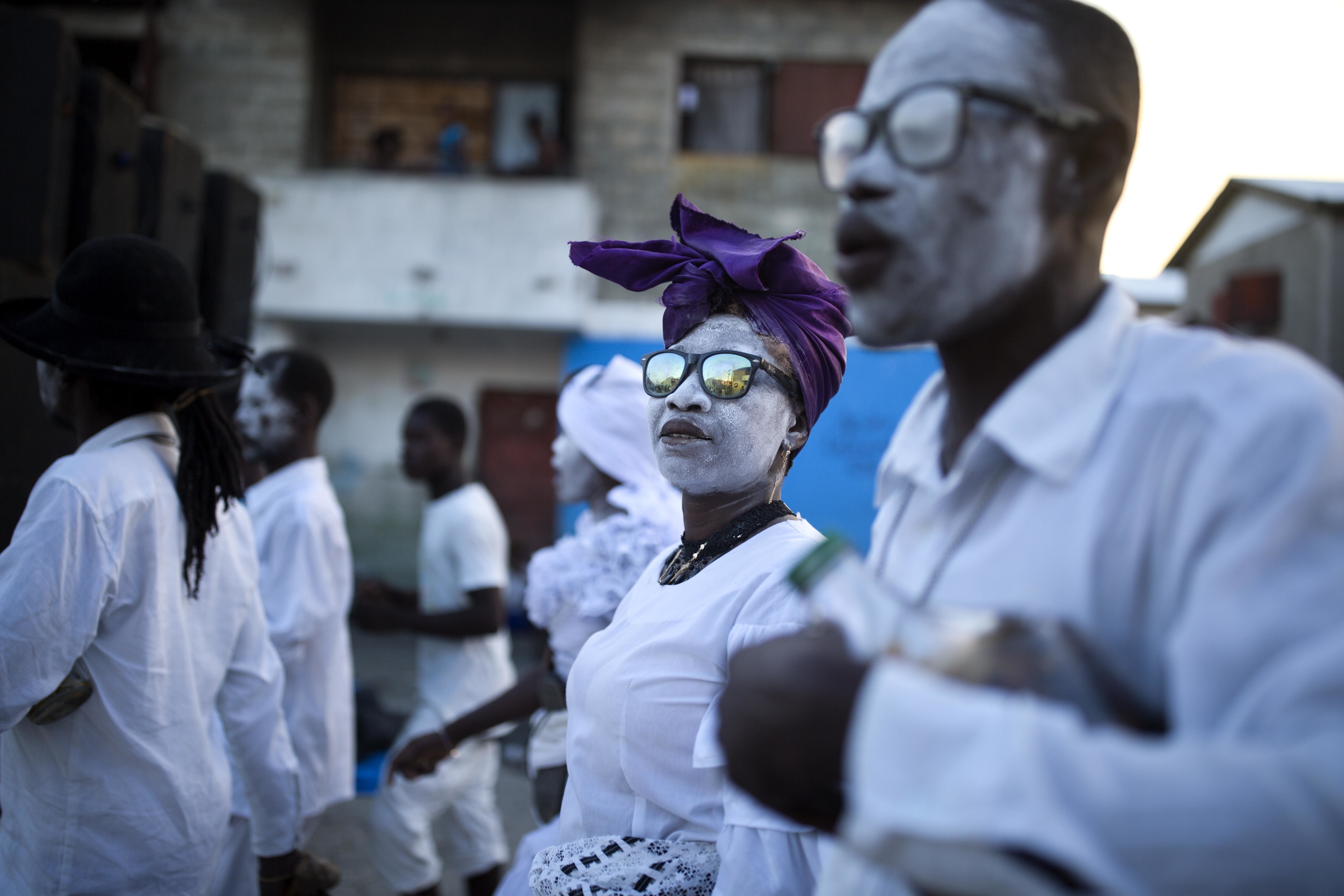
Voodoo believers dressed for Fete Gede.
(via TheConversation.com)6. Indo-European Countries
Name of Event: Velja Noc
Date: December through February
History: Velja Noc, or Great Night, is an ancient pagan festival honoring the Slavic god of earth, water, and the underworld, Veles. Pagans believed that the line between the living world and the underworld was weaker during winter and spirits had an easier time travelling among those still alive. Slavic pagans who celebrated this festival lived in Central and Eastern Europe.
Tricks and Treats: Men known as koledari would dress up and go caroling around their villages during the winter months, particularly on Velja Noc. They would also trick-or-treat; each house they visited would present them with gifts to offer up to Veles, who was also the god of magic and wealth. Giving gifts would bring good luck and wealth to the family for the year, until the next Velja Noc.
Costumes: The koledari would wear long coats made from sheepskin and wool and would also don monstrous masks to represent the spirits of the dead. The masks were made from dried gourds, horsehair, beans, wool and other fibers. Animals like bears, cows, oxen, and wolves were commonly represented in the masks. They would make their costumes wet and muddy to symbolize their journey from the murky underworld.
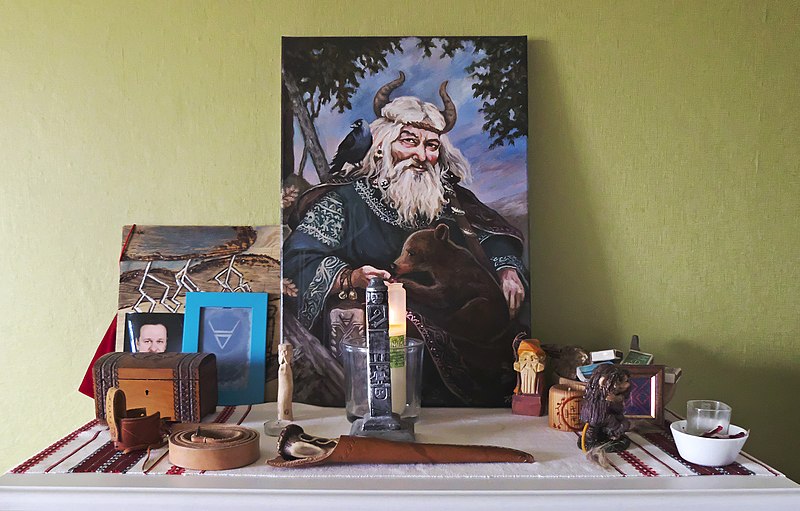
A home altar to the Slavic god Veles.
(via Wikimedia.org)
7. Ireland
Name of Event: Samhain
Date: October 31st
History: Samhain is thought to be the earliest manifestation of what we consider Halloween today. The medieval Irish festival, which started in the 10th century, marked the beginning of winter and the start of “the dark half” of the year, with the following day being All Saint’s Day. The fall festival celebrated the final harvest of the year and also paid tribute to the dead. Bonfires were a staple at these events and it was the time when most cattle were slaughtered for food for the winter. Through the Christianization of the people of Ireland, All Saint’s Day became All Hallows’ Day, which in turn transformed Samhain to All Hallows’ Eve and finally, Halloween.
Tricks and Treats: A traditional practice of divination was very common during Samhain. Methods such as reading apple peels, interpreting the movements of roasted nuts and counting crows all were used to find answers to questions about children, fortune and love. Later on, in the 16th century, children also roamed the villages in costumes, while carrying turnip lanterns, performing tricks for treats. Today, many people still celebrate Samhain in all parts of the world through church fall festivals. There are also people who follow the Pagan and Wicca religions who honor the festival by constructing large bonfires, singing traditional Gaelic songs and honoring the dead.
Costumes: There were many children and adults who dressed as the dead for the festival. They blackened their faces and dressed in white, as to appear like a ghost. They also created masks and wore veils to conceal their identity.
Find Out More:
https://en.wikipedia.org/wiki/Samhain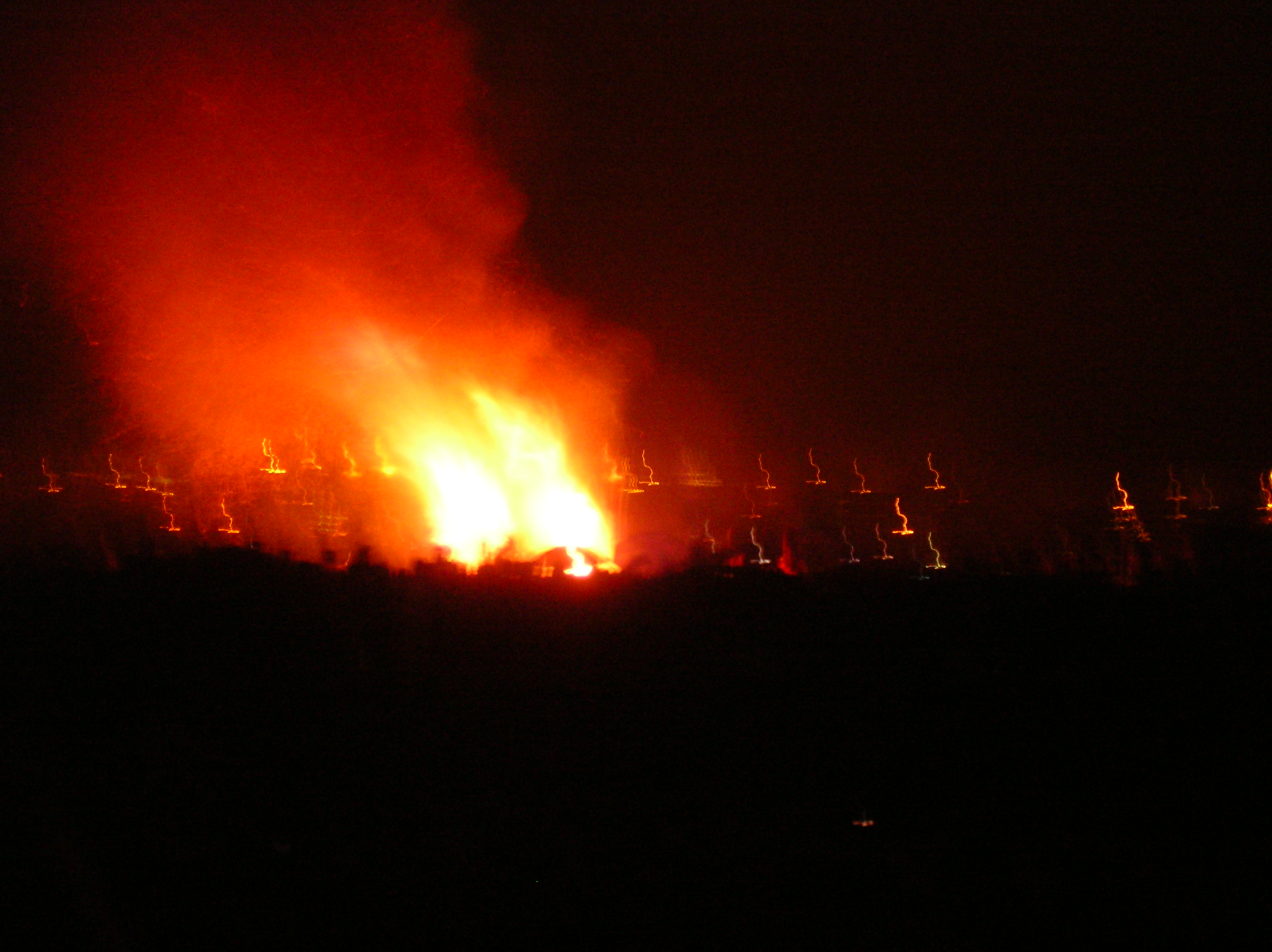
Large bonfires are a staple of the Samhain tradition.
(via Wikipedia.org)8. The Isle of Man
Name of Event: Hop-tu-Naa
Date: October 31st
History: Hop-tu-Naa originated in Celtic regions of Europe as a celebration of their new year and is still celebrated today in the Isle of Man. It is historically a time for divination, weather prediction and preparation for the winter months. The origin of the name is uncertain, but it is commonly believed to translate to “this is the night” in Gaelic.
Tricks and Treats: Trick-or-treating during Hop-tu-Naa was an event that has some similarities, but also some differences, to what we think of the activity today. Children dressed up and went door-to-door, but, in older customs, if the children didn’t get any candy or money, they beat the doors with turnips to show their displeasure. Another customary trick-or-treating activity was singing traditional Celtic songs, which featured imagery of full moons, witches and black cats. “Jinnie the Witch” is a very popular Hop-tu-Naa carol and is supposedly based on a real girl, who was tried for witchcraft in the 1700s.
Costumes: Today, children in these regions wear modern Halloween costumes, like witches, vampires and goblins.
Find out More:
https://en.wikipedia.org/wiki/Hop-tu-Naa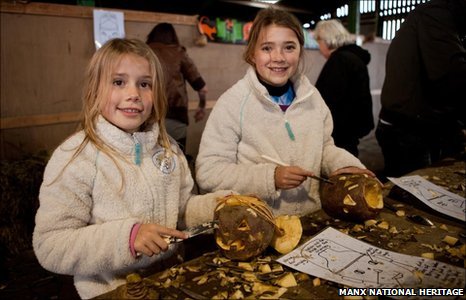
Carving turnips during the Celtic Hop-tu-Naa celebration.
(via BBC.co)9. Japan
Name of Event: Obon Festival
Date: August 15th, but can vary around the country.
History: The Japanese Obon festival is a time where lost spirits are believed to return home to meet with their family and friends. This time is usually very family-oriented – great feasts are prepared and families take trips to cemeteries to pay tributes. Incense is lit, food is offered to the deceased and lanterns are lit at homes to help guide the spirits. The dance Bon Odori is a very common event at Obon festival celebrations. This folk dance is performed in parks and shrines and taiko drummers help the dancers keep the beat.
Tricks and Treats: While the Japanese Obon festival is considered a peaceful time to reflect and remember, there are elements in Japanese culture that are less than serene. Japanese ghost stories, or kaidan, have been prevalent in Japanese culture dating back thousands of years and are usually gruesome, violent and horrifying. One of the most popular Japanese kaidan is “The Ghost Story of Yotsuya.” The story has changed over the years, but the plot always deals with a town met with murder, mistaken identity and vengeful ghosts. The ghost of a young woman is disfigured and haunts the main character; she is sometimes shown with burnt skin on her face, huge chunks of her hair missing and even an eye hanging loose on her check. Legend even says that any woman portraying this ghost in a play could possibly become possessed by the character and should visit her shrine to pay respects.
Costumes: In Japanese theater, ghosts are portrayed with ragged and messy hair, all-white burial kimonos and white face make-up. Another prominent feature is the lack of legs and feet – in live plays, this effect is achieved by hoisting the actor into the air with pulleys and an extra long kimono as costume. The ghost of the young girl in the movie “The Ring” is very typical of a Japanese depiction of spirits. She is shown with a covered face, lifeless hands hanging from outstretched arms, and messy black hair.
Find Out More:
https://en.wikipedia.org/wiki/Bon_Festival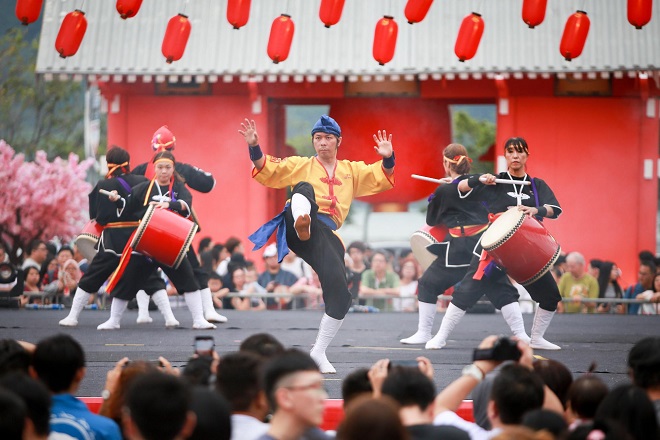
Dancers perform an ancient Japanese dance, Bon Odori, out of respect for the deceased.
(via Luxo.com)10. Mexico
Name of Event: Dia de los Muertos
Date: October 31st through November 2nd
History: Dia de los Muertos, or the Day of the Dead, is a holiday that celebrates and honors friend and family members who have passed away. The Day of the Dead is said to be the time that heaven’s gates are opened and the spirits of loved ones are able to reunite with their friends and families, with children and infants honored first and spirits of adults are celebrated on the next day. One of the main differences between the American celebration of Halloween and Dia de los Muertos is that the Mexican holiday is still deeply based in religious belief and culture. This holiday has been celebrated for over hundreds of years and is still as important to Mexican culture today.
Tricks and Treats: One of the most recognizable features of the Day of the Dead celebration is the sugar skull. The sugar skull is colorful and brightly decorated candy or sculpture used to adorn altars set up for the holiday. Altars, known as ofrendas, also are adorned with religious statues, candles and pictures of lost loved ones. Epitaphs are also written to remember those who have passed and include funny stories and habits. In many areas of the country, children visit houses in their neighborhood asking for small gifts of candy or money.
Costumes: The skeleton is used very often as a costuming theme. Extravagant make-up is used to decorate faces to completely resemble a sugar skull. More recently, Day of the Dead parades have included children dressed in less traditional costuming, such as vampires, devils, and even scarecrows.
Find Out More:
https://en.wikipedia.org/wiki/Day_of_the_Dead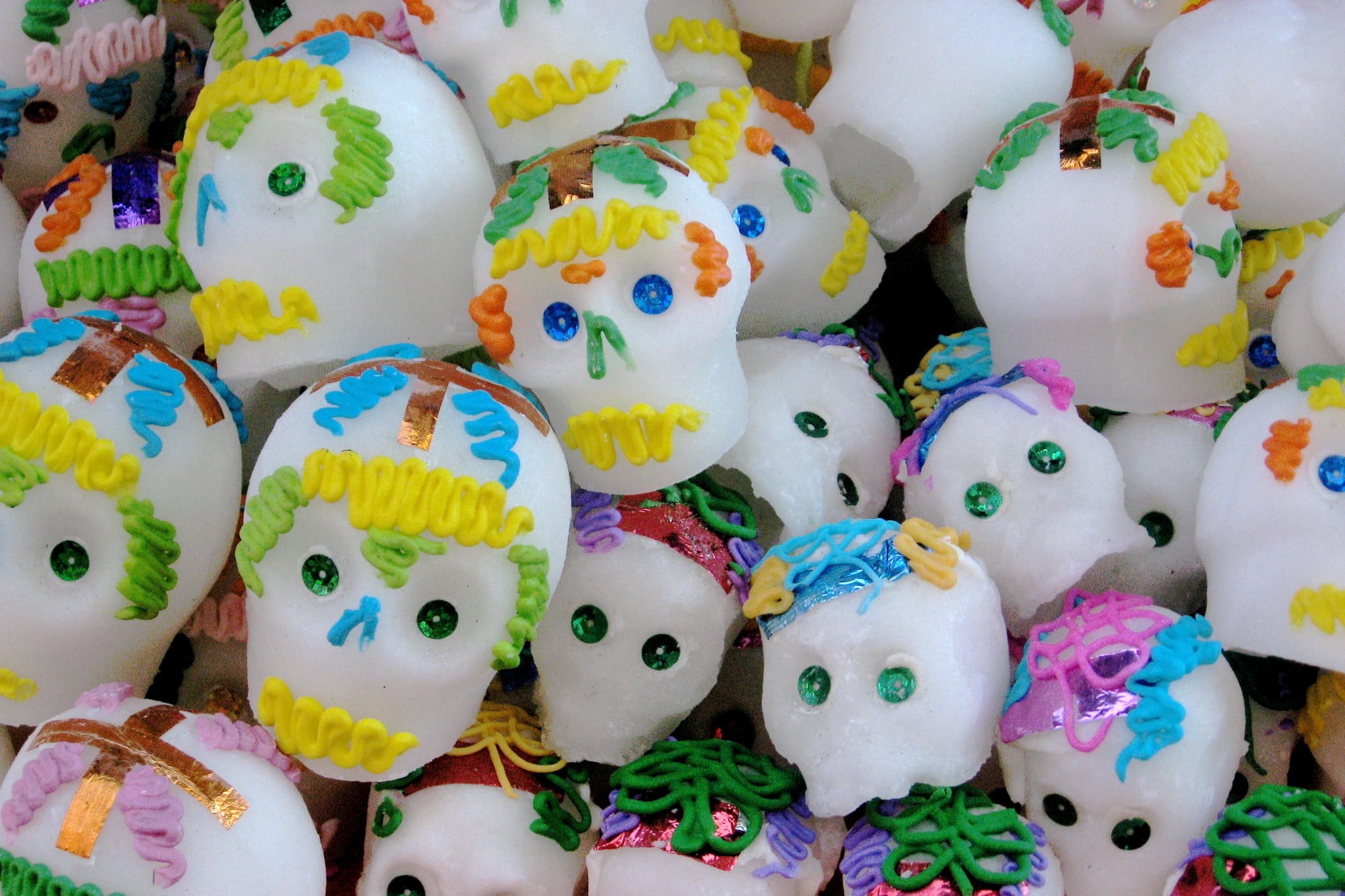
An example of Mexican sugar skulls to be sold at a Day of the Dead festival.
(via Popsugar.com)11. Nigeria
Name of Event: Odo Festival
Date: September through April, every two years.
History: The Odo Festival is a holiday among the Igbo people of Nigeria. Odo is the name for the spirits of the dead in the Chukwu religion. There are three stages of this event: the arrival of spirits of family members, the time when these spirits live and communicate with the living, and, finally, the departure of the spirits. At the end of the festival, the final ritual Afia Una is performed. During Afia Una, men who are dressed as the Odo reenact the departure of the spirits by walking through the village, purifying the community of its sins and any other negative spirit.
Tricks and Treats: During the last stage of the Odo Festival, the Igbo people put on a large theatre performance that reenacts the story of the holiday. There are also musicians who accompany the presentation; they play xylophones, drums, and rattles. All the preparations for the festival are done in secrecy, because women and outsiders are not allowed to be a part of setting up for the festival. The women are responsible for making sure there is enough food for the people who are celebrating, as well as for the Odo spirits.
Costumes: The spirits who return to their living families are portrayed by village men, wearing ornate masks. The costumes are decorated with leaves, beads, feathers, and other materials from plants. Men who are representing evil spirits wear black costumes, covered with thorns. Women who attend the festival wear their most expensive and elaborate jewelry and adornments.
Find Out More:
https://encyclopedia2.thefreedictionary.com/Odo+Festival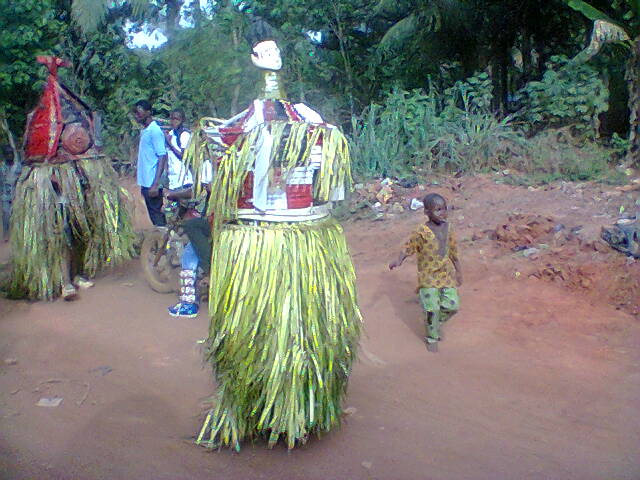
Odo festival costumes.
(via Nairaland.com)12. Transylvania, Romania
Name of Event: Halloween
Date: October 31st
History: What says Halloween more than Dracula? Romania is home to the birth place and castle of Vlad Tepes, the inspiration of Bram Stoker’s “Dracula.” This castle is open for visitors to explore and the town also gives tours around the town to other Dracula-related locations. Vlad was born in 1431 and ruled as Prince of Wallachia, Romania, from 1456 until 1462. His evil reign and methods of execution were fodder for multitudes of folklore in the area, which is what motivated Stoker to write his novel. Halloween parties are held today in the area, where guests can attend a witch trial, get their fortunes told and watch as a witch tries to make Vlad’s ghost appear.
Tricks and Treats: Vlad Tepes was also known as Vlad the Impaler and is regarded as one of the most evil rulers in history. There are many legends of his actions that have been told through the years. He was known to impale bodies of his enemies and display them in front of his castle to scare off intruders. There are also stories that tell of Vlad dining outside, among the people he tortured. Vampire myths also were in circulation and stories were told of Vlad eating human flesh, as well as feeding it to his enemies.
Costumes: As you can imagine, a popular costume at many Transylvanian Halloween parties is vampire. Many qualities of Vlad the Impaler’s image have inspired what we view as a classic vampire today. Vlad wore a cape, is said to have allergies to blood which gave him pale skin, and he had a violent nature. People attending the party as a vampire often paint their faces white, wear fangs and don formal clothes. These are all attributes of the title character in Bram Stoker’s, “Dracula.”
Find Out More:
https://en.wikipedia.org/wiki/Vlad_the_Impaler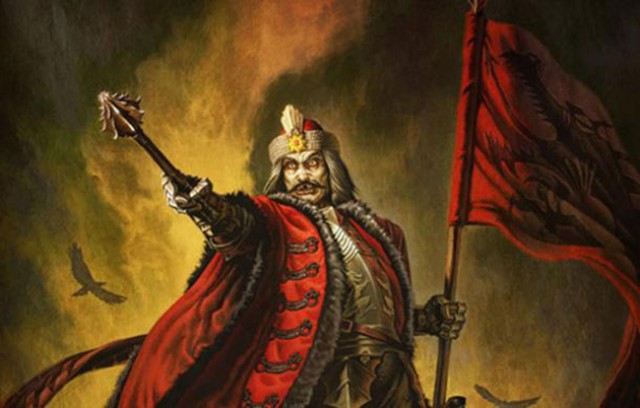
An artist's rendition of Vlad the Impaler.
(via WarHistoryOnline.com)13. Salem, Massachusetts, USA
Name of Event: Salem Witch Trials
Date: 1692 to 1693
History: The story of the Salem Witch Trials in Salem is one of the most popular supernatural-related tales in American history. In the late-1600s, the residents of colonial Massachusetts were caught up in a mass hysteria of witch hunts, false accusations and mass executions. The religious extremism present in the people of that time caused them to fear damnation so much that they would accuse others of being guilty of crimes that may not have been true. In the end, 19 people were put to death after being convicted guilty of witchcraft.
Tricks and Treats: The trials in Salem had a few different ways to determine if the accused were witches or not. Much of the testimony was from sick and afflicted townspeople who believed they were made ill by local Salem witches. They claimed they knew who the guilty ones were based on spectral evidence, which meant that they had seen an apparition of the one who made them sick. Another method used in the trails of determining guilt was through the use of a touch test. When the afflicted victims were having a fit of illness, if a witch laid hands on them, the fit would supposedly stop.
Costumes: One of the scariest elements of this hysterical witch hunt was that there was no outward way to determine a witch from an innocent person. In this time period, Puritan Americans wore very conservative clothes – bonnets, capes, long dresses and coats, heavy waistcoats and wigs. They were always covered up and did not wear bright colors.
Find Out More:
https://www.history.com/topics/colonial-america/salem-witch-trials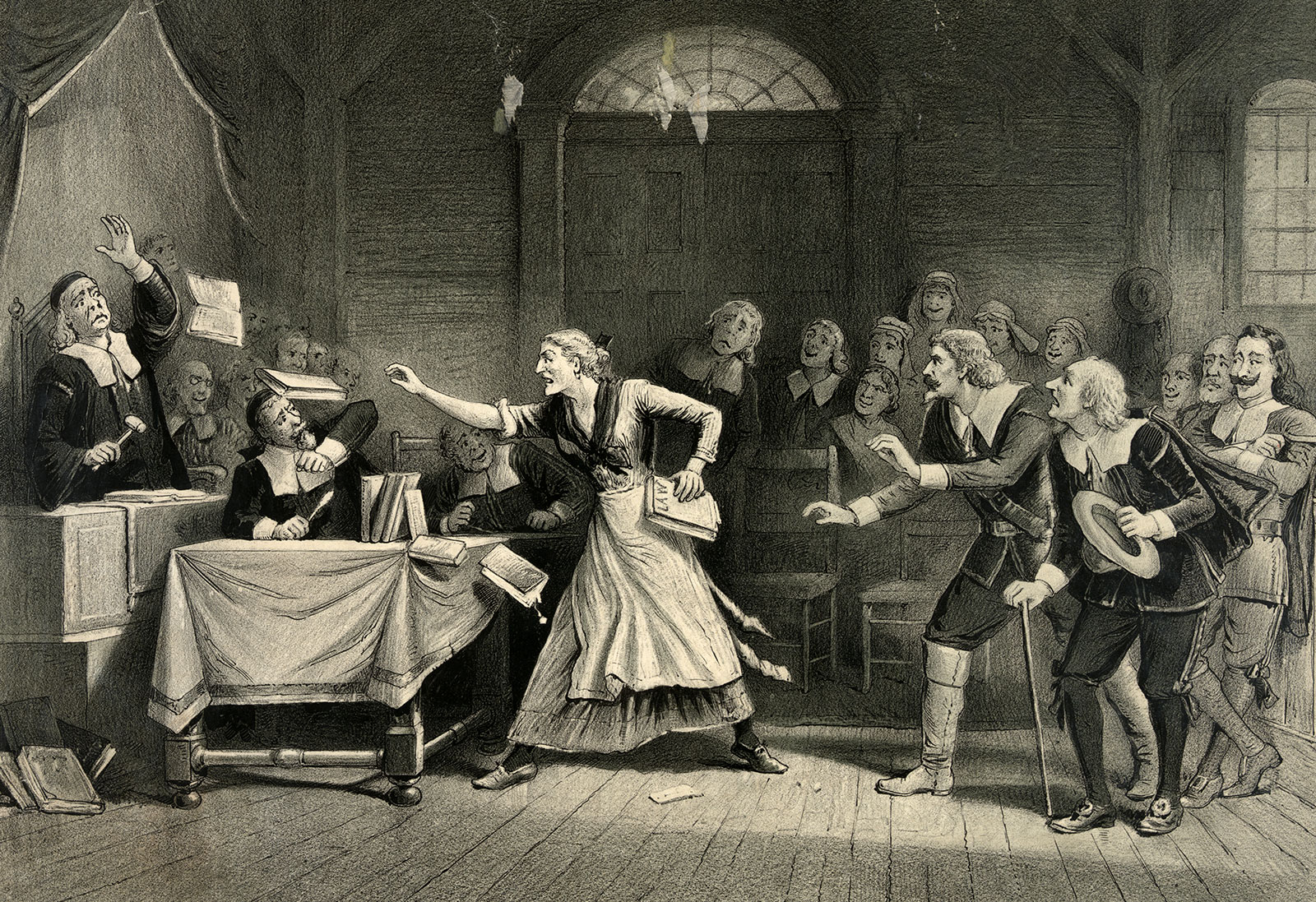
"Witch Trial in Salem, Massachusetts" by George H. Walker, 1892.
(via Brittanica.com)
